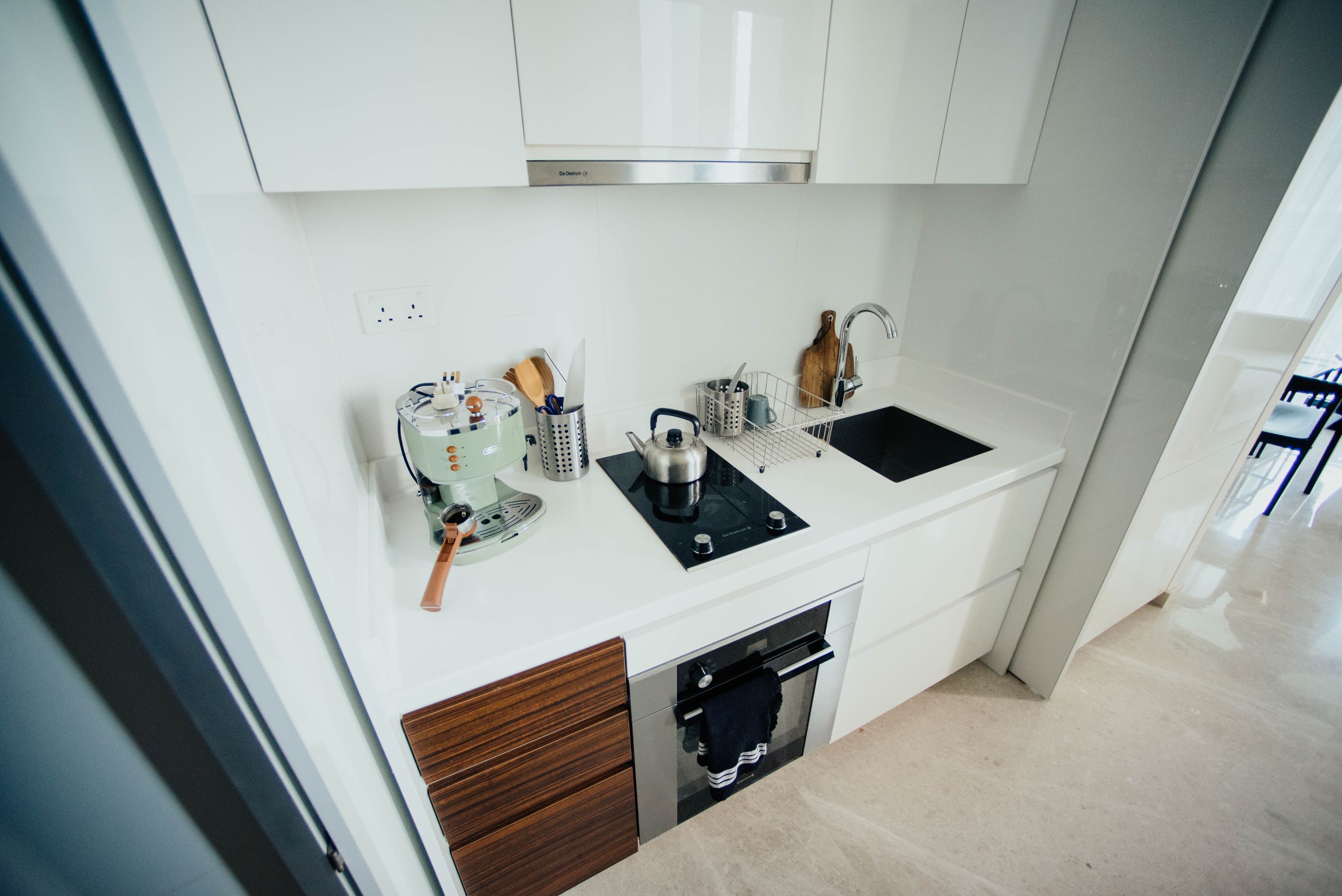The Ultimate Guide to Home Flooring Costs
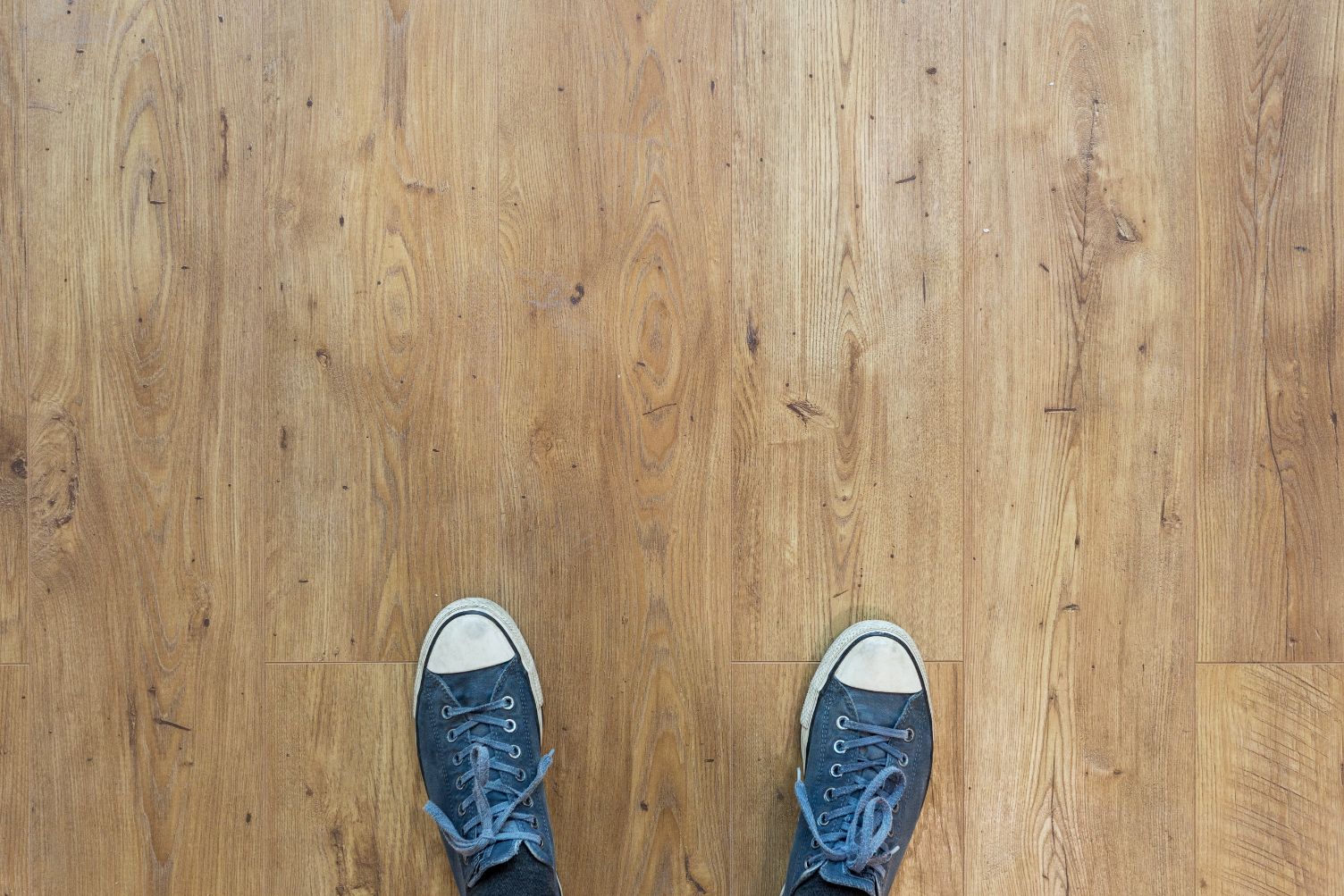
Get The Property Insights Serious Buyers Read First: Join 50,000+ readers who rely on our weekly breakdowns of Singapore’s property market.
A seasoned content strategist with over 17 years in the real estate and financial journalism sectors, Ryan has built a reputation for transforming complex industry jargon into accessible knowledge. With a track record of writing and editing for leading financial platforms and publications, Ryan's expertise has been recognised across various media outlets. His role as a former content editor for 99.co and a co-host for CNA 938's Open House programme underscores his commitment to providing valuable insights into the property market.
Given that it’s just something to walk on, you wouldn’t think flooring is a huge cost. But in some renovations, flooring alone can account for as much as a tenth of the overall renovations; and if there’s a delay, about half the time it’s a flooring issue (waiting for the materials to arrive, the tiles are popping out, etc.)
In this guide, we’re going to take a look at all the flooring basics, along with the issues you could encounter. And yes, we included the average costing, so you’ll know you’re not getting ripped off. For this article, we had help from Ron Chong, a present-day realtor who actually first started off in construction and Interior Design.
Let’s get right to it.
The types of flooring available
Flooring refers to any covering on your floor that’s designed to be permanent. Under the standards of the Building and Construction Authority (BCA), the term flooring includes skirting (the covering at the base of the wall, which covers up the gaps between the flooring material and the wall).
Typical types of flooring include:
- Vinyl
- Laminate
- Marble
- Ceramic / Porcelain
- Linoleum
- Hardwood
1. Vinyl
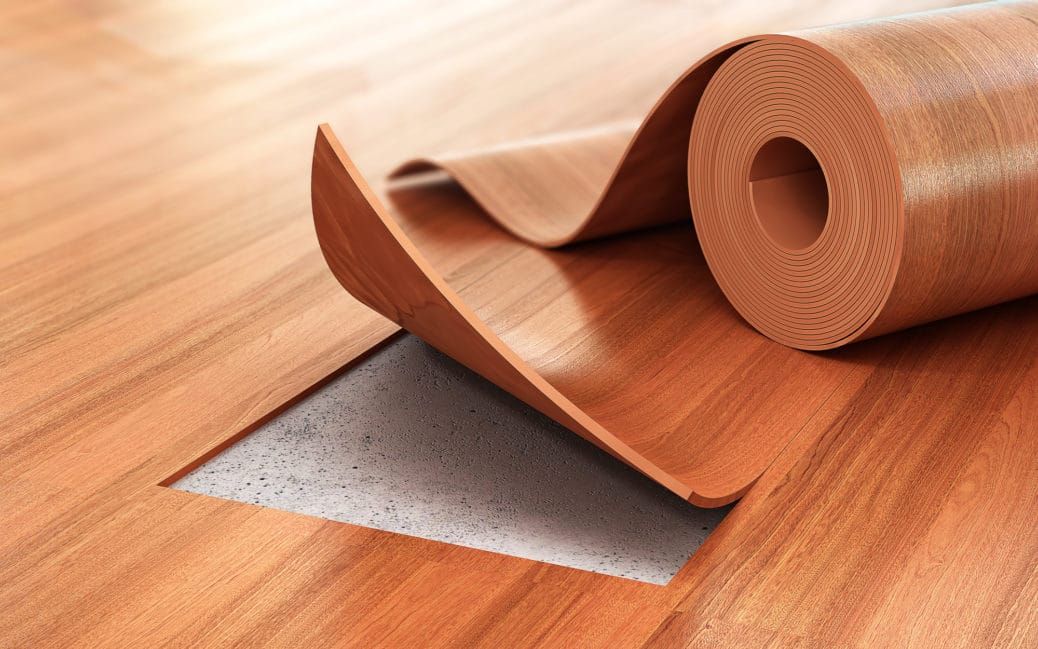
Vinyl is probably the most common type of flooring material in Singapore, as well as in many other countries. It can come either as sheet vinyl flooring (one continuous sheet that you cut to shape), or Vinyl Composition Tiles (VCTs).
VCTs are actually meant for institutional use, such as offices and schools, so do question why it’s needed if the designer / contractor recommends it.
(VCTs are laid out like tiles, so that individual pieces can be replaced if damaged. For sheet vinyl, you often have to replace the whole sheet if the vinyl is badly damaged).
Vinyl can be “textured” to look like other materials, such as wood or stone. Because it’s tough, water resistant, and easy to clean, they’re sometimes preferred to the real thing.
These days, you can also get Luxury Vinyl Flooring (LVF), which has multiple layers and looks more deeply embossed (to simulate wood or stone).
Average cost: Around $4 to $6 per sq.ft.inclusive of labour (the higher end is for LVF). Particularly hands-on owners can try to lay vinyl themselves, it’s not too difficult.
2. Laminate
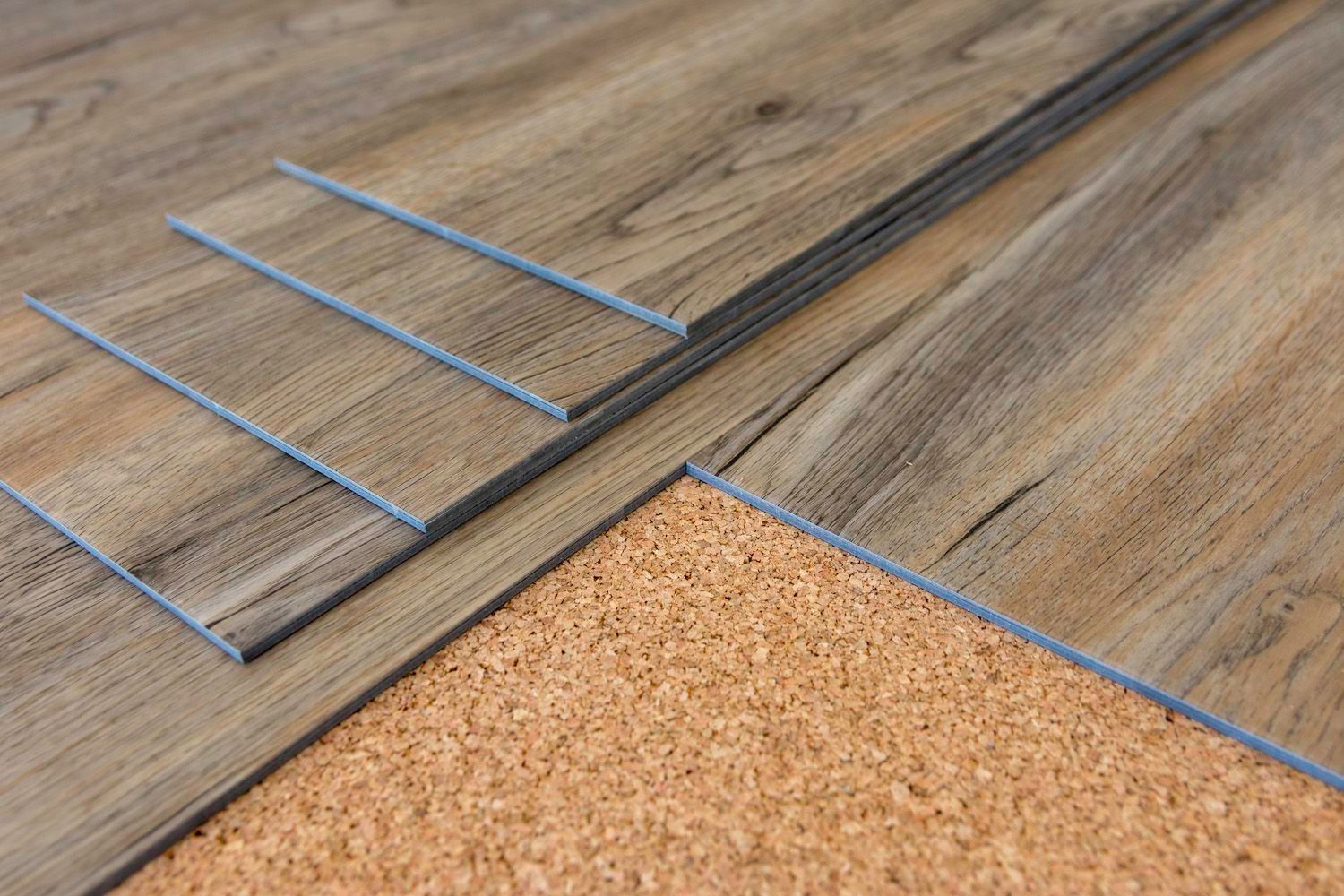
Laminate is often used as an alternative to hardwood. The wood in laminate is typically a by-product from other furniture and carpentry work – these bits of wood form the core of the laminate, which is then covered with a thick, transparent plastic layer between six to 12 millimetres.
What you’ll have to know here is that the wood is just the chipboard backing. The visual aesthetic is actually high definition printing on paper. So the wood pattern is actually a print. Laminate is also less moisture resistant than vinyl so it’s not recommended for bathrooms or heavy use kitchens.
Average cost: Around $3 per sq.ft. inclusive of labour
3. Marble
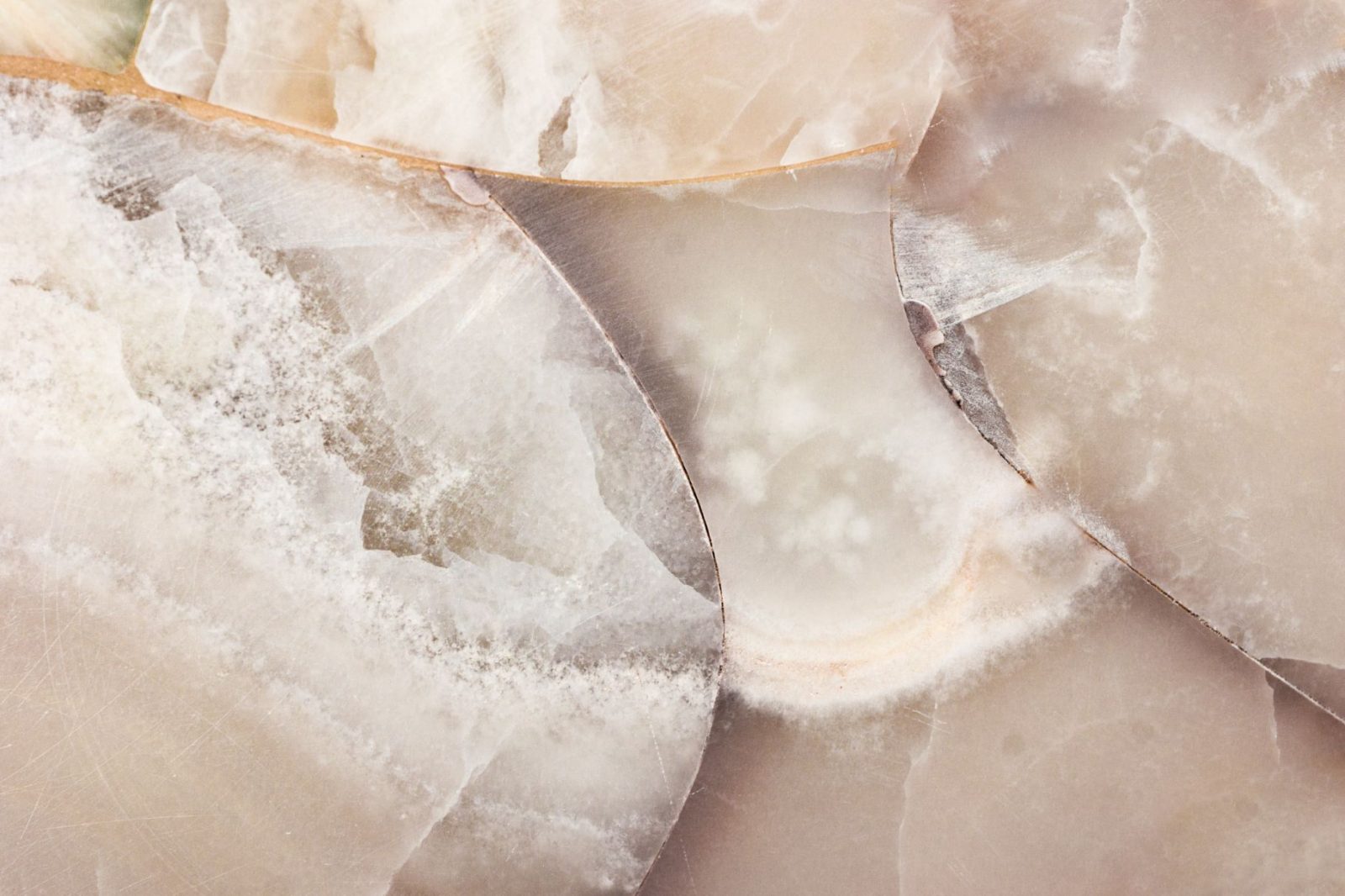
The most high-end and high-maintenance flooring option. Besides being pretty to look at, marble tends to be cool to the touch, which is always nice to lie down on in the Singapore heat (science lesson: heat moves from the warmer to the colder, and marble both transfers and dissipates heat quicker).
Marble requires a lot of maintenance. It’s porous and stains easily, and degrades over time if you don’t keep it polished. It tends to discolour if used for bathrooms, kitchens, and areas that aren’t kept dry.
Average cost: The price of marble varies significantly, from $12 to $20 per sq. ft. (common in most homes), to as absurdly high as $100 per sq.ft. because if you already bought a $20 million penthouse, you may as well go all out.
There is a very wide range of marble options, so the cost can vary significantly. The labour cost is around $15 per sq.ft, but also varies based on how much polishing, grouting, and other work is needed.
4. Ceramic / Porcelain
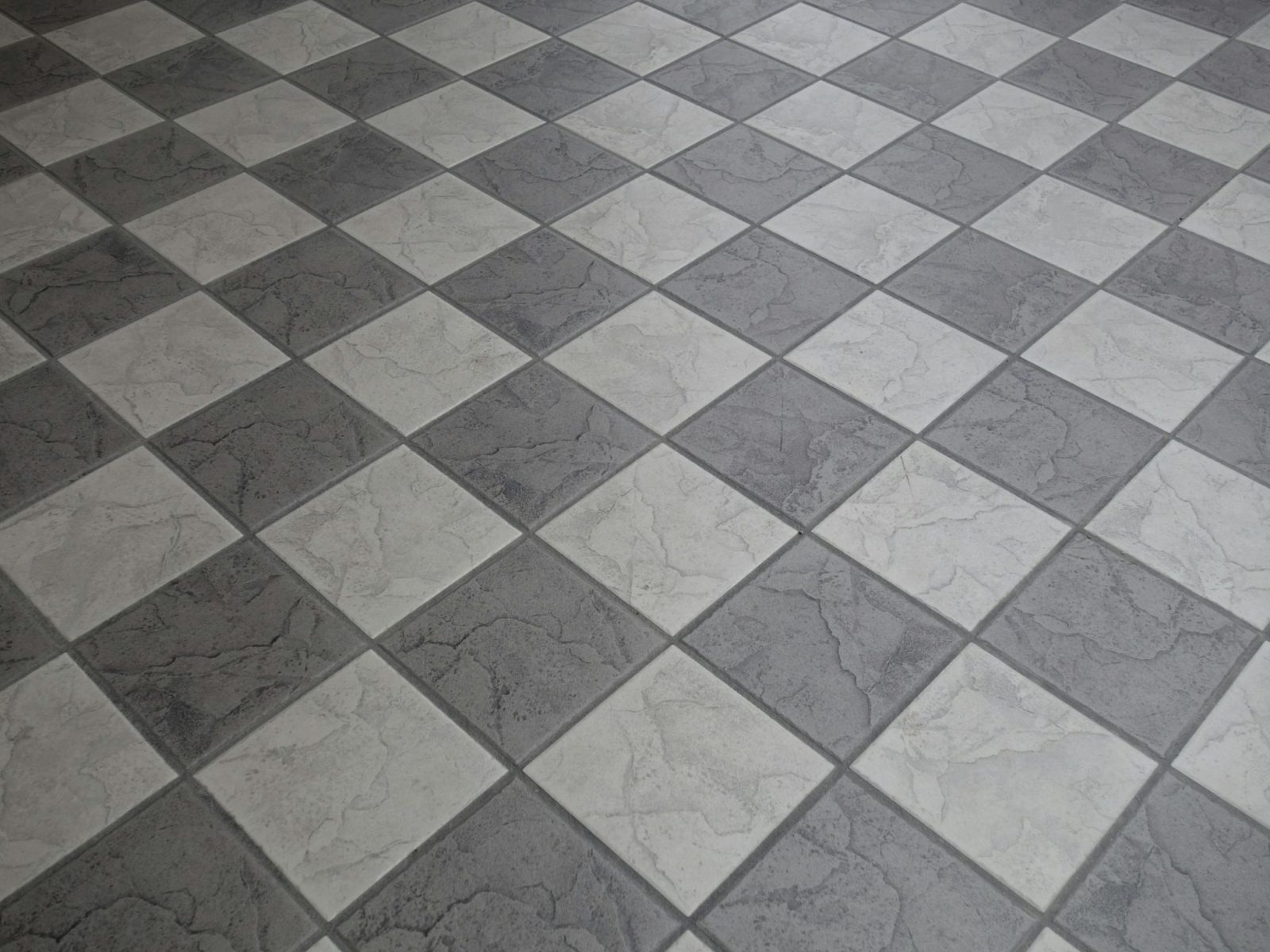
These are fired products (i.e. cooked in an oven) made from clay or silica. They can be rough textured or glossed, and are one of the most versatile materials (they can be painted, arranged to form patterns, etc.)
There are a lot of bad generalisations about how durable ceramics are. It actually depends on how the ceramics are rated on the Porcelain Enamel Institute (PEI) scale. PEI 4 – 5 is commonly used, while anything that’s PEI 3 or below is considered fragile (slamming your chair down can chip it).
In Singapore, we typically use homogenous tiles, which are full-bodied porcelain tiles. These are typically in the PEI 4-5, are less porous, and have the same colour running throughout the thickness (so if the top layer is chipped, the colour underneath is similar).
Porcelain doesn’t fade as easily as marble, and is more resistant to discolouration from liquid stains.
Average cost: About $3 to $5 per sq.ft. before labour, while labour costs are around $10 per sq.ft.
5. Linoleum
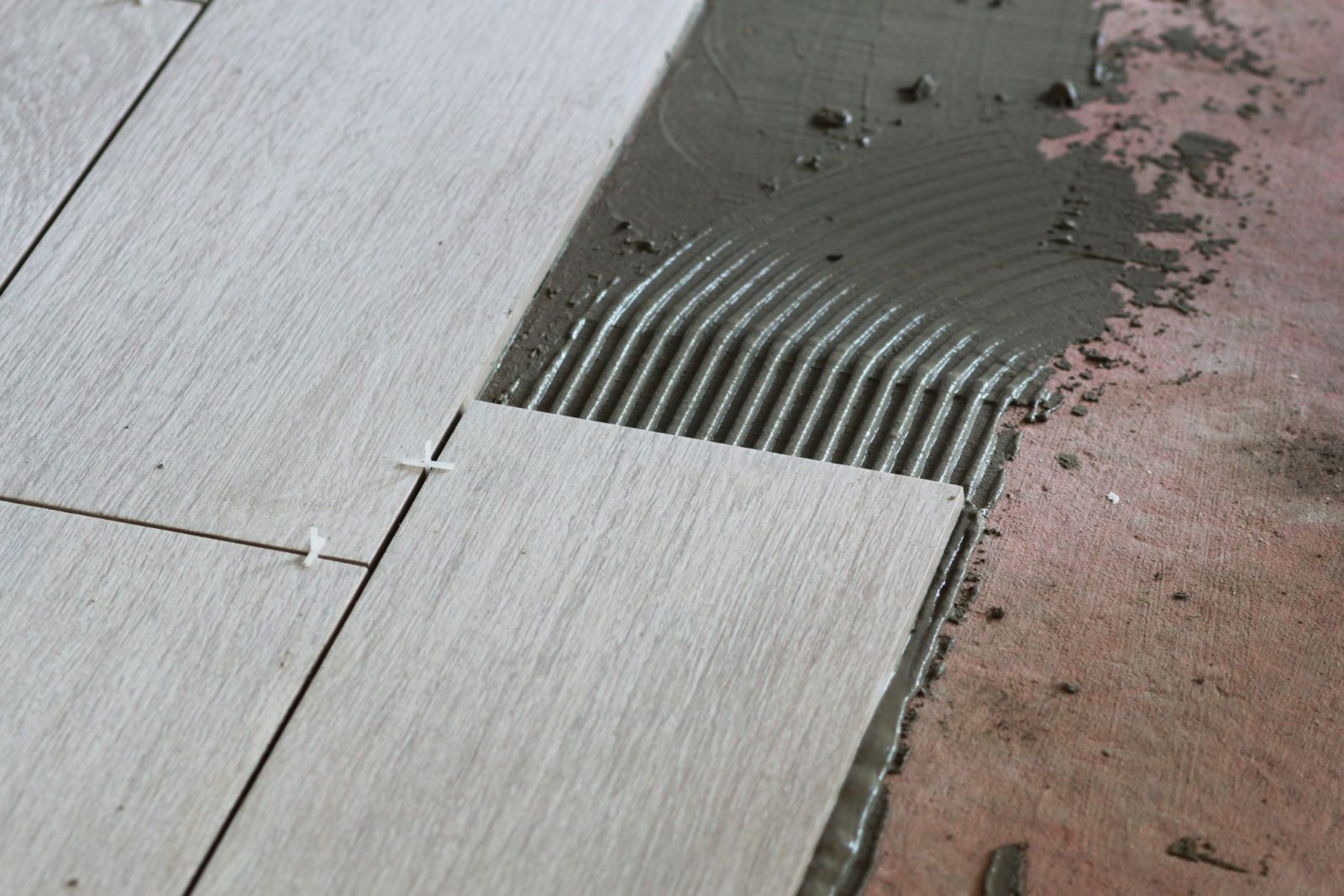
This is a less common counterpart to vinyl. Linoleum is making a comeback because it’s considered more ecologically friendly. Unlike vinyl, linoleum doesn’t incorporate artificial plastics – contents are typically linseed oil with pine rosin, limestone, cork, and other biodegradable products.
Linoleum is stiffer than vinyl, and has a yellow tint when first laid. This is called the “bloom,” and it dissipates over time. The more exposed it is to sunlight, the faster the bloom will fade.
Linoleum is more vulnerable to water damage than vinyl, so it’s seldom used in bathrooms and kitchens.
Average cost: Around $3 to $5 per sq.ft. including labour.
6. Hardwood / Parquet
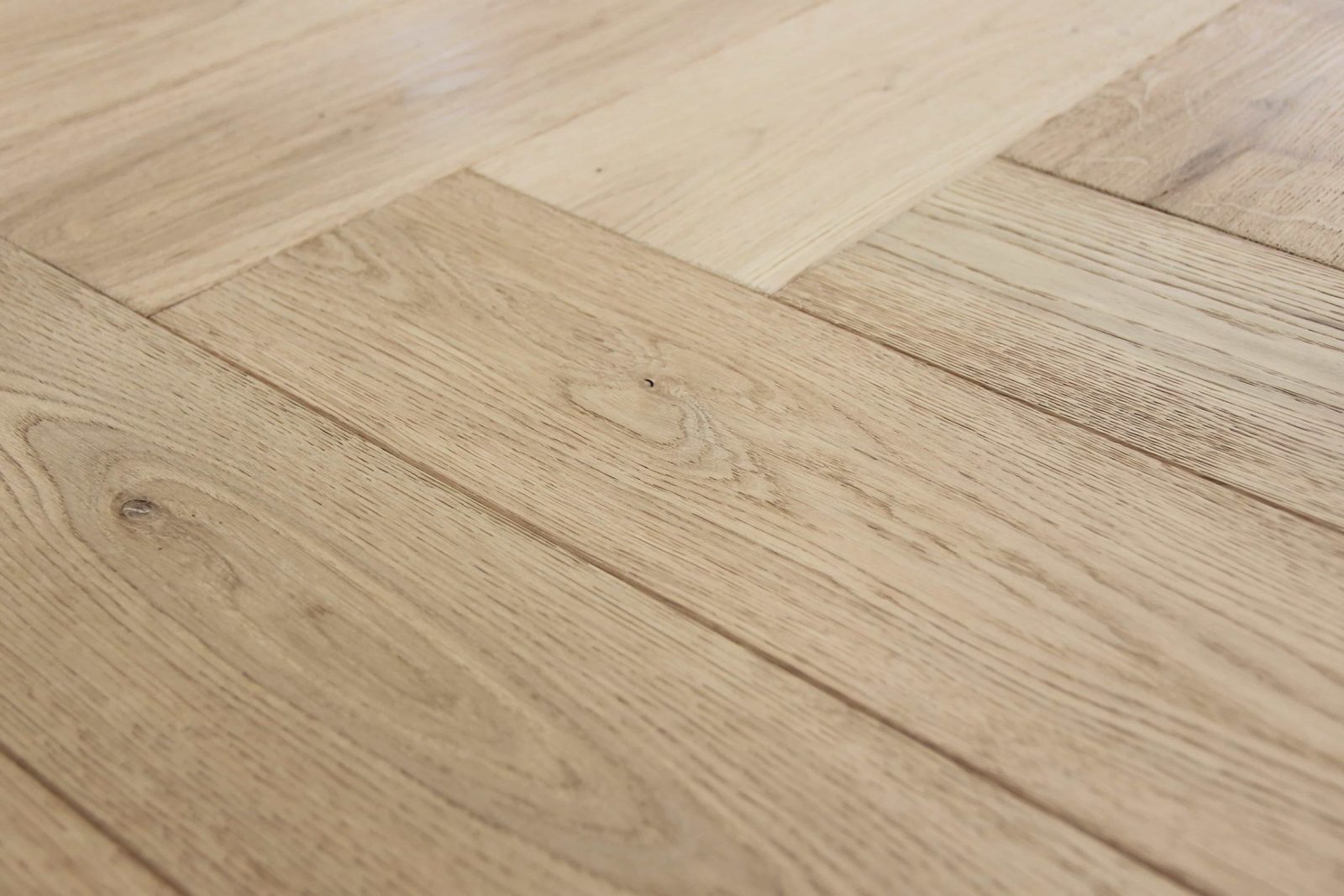
Any kind of wood made from dicot trees is hardwood. There are many kinds of hardwood available, which will affect the floor patterns and overall colour (from golden browns to deep reds). In Singapore, we sometimes call bamboo flooring hardwood as well (not technically correct since bamboo is not made from trees).
Hardwood fits many design schemes, and feels the most natural underfoot. However, some of the softer types of wood will dent or scratch more easily; bamboo in particular is very soft. These are easily damaged by heavy furniture, so check the appropriateness with the supplier.
Hardwood can be damaged by prolonged exposure to moisture. It can also be discoloured by extensive exposure to sunlight, so avoid putting in front of large picture windows.
Average cost: Around $10 to $20 per sq.ft. including labour.
What do most other people spend on their flooring?
Giving you an “average” cost is impossible as it depends on your choice of flooring, but that answer doesn’t help you either. So instead, we asked what most other people spend – that should give you a rough gauge of whether you’re going overboard.
Ron says that, for most well-renovated five-room HDB flats (average of 1,280 sq.ft.), the total cost of the flooring will come to around $7,000. Other Interior Designers mostly agreed, and said costs are more typically around $8,500 for a condo unit of 1,200 sq.ft. (most condo dwellers pick fancier materials).
If you’re willing to use plain vinyl flooring for the whole unit, the cost can be as low as $5,100 for a 1,200 sq.ft. unit.
Ron adds that you shouldn’t forget haulage; this is to clear the existing debris, or to transport needed materials like sand and cement. Haulage costs around $600 for smaller units (e.g. two or three-room flats), to about twice this amount for five-room flats or larger condos.
Contractor versus Interior Designer
There’s a significant difference between using a contractor and Interior Designer. Ron says:
“An Interior Designers advises on the overall colour and materials, to fit the design theme of the house. The designer engages a third-party, or a sub-contractor, to actually lay the tiles.
Interior Designers with “turn keys”, or one-stop services, are suitable for clients with busy schedules, and who need one professional to oversee the entire project.”
These “turn key” Designers won’t just do your flooring for you though; they typically expect to take charge of your entire project, including furnishings and furniture (sometimes called full suite Fittings, Furnishings, and Equipment, or FF&E).
“These Interior Designers will coordinate with all sub-contractors and authorities like HDB, the Town Council, BCA, or your condo’s MCST”.
But Ron says the services will come at a premium for the convenience.
“For clients that like to be hands-on and know what they want, or have time to oversee the whole project, you can use a contractor instead. This is a trend for younger couples with tight budgets, and who want to make online purchases for some materials themselves.
This is more cost-efficient and relies on personal creativity. This group of clients just need a pair of hands, which is what contractors are.”
While the contractors are cheaper, do note that they expect overall instructions to come from you. It’s not technically in their job scope to advise you what sort of flooring to use or who to buy it from; you get the materials, and they do. That’s it. You may also have to handle the various needed permits.
In general, a contractor will charge about 30 per cent less than an Interior Designer. For some specific tasks (e.g. just the flooring in the kitchen), the cost of the specific task can be as much as halved, if you just use a contractor who you direct yourself.
What sort of flooring goes best in each room?
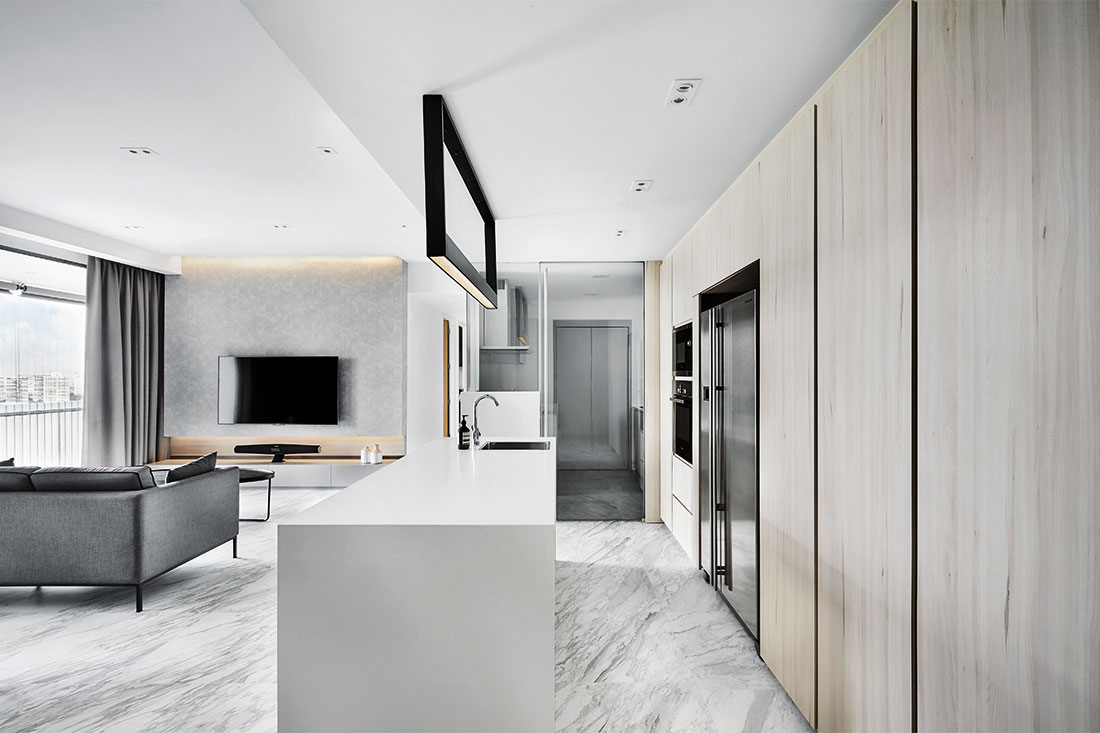
For kitchens, Ron suggests homogenous tiles, especially for Asian style cooking. These are less porous, so stains from spills aren’t going to be permanent. Most other Interior Designers agreed, although hardwoods for kitchens are becoming just as popular.
If you use hardwood you need to keep the area ventilated and the door open if you fry with a wok; otherwise it will leave a thin film of oil that damages the wood, and damages you if you slip.
Ron notes that tiles for the kitchen shouldn’t be too rough even if they’re matte; this is for the same reason of the oil being trapped (over time, it can discolour the tiles).
For toilets and bathrooms, homogenous tiles with rough, matte surfaces are recommended. While vinyl is just as water resistant, it’s also a lot more slippery.
For living areas, use whatever you want to impress your guests. But the general idea is to go for something more polished, to amplify the light and make the area look grander.
What are you supposed to look for after the flooring is laid?
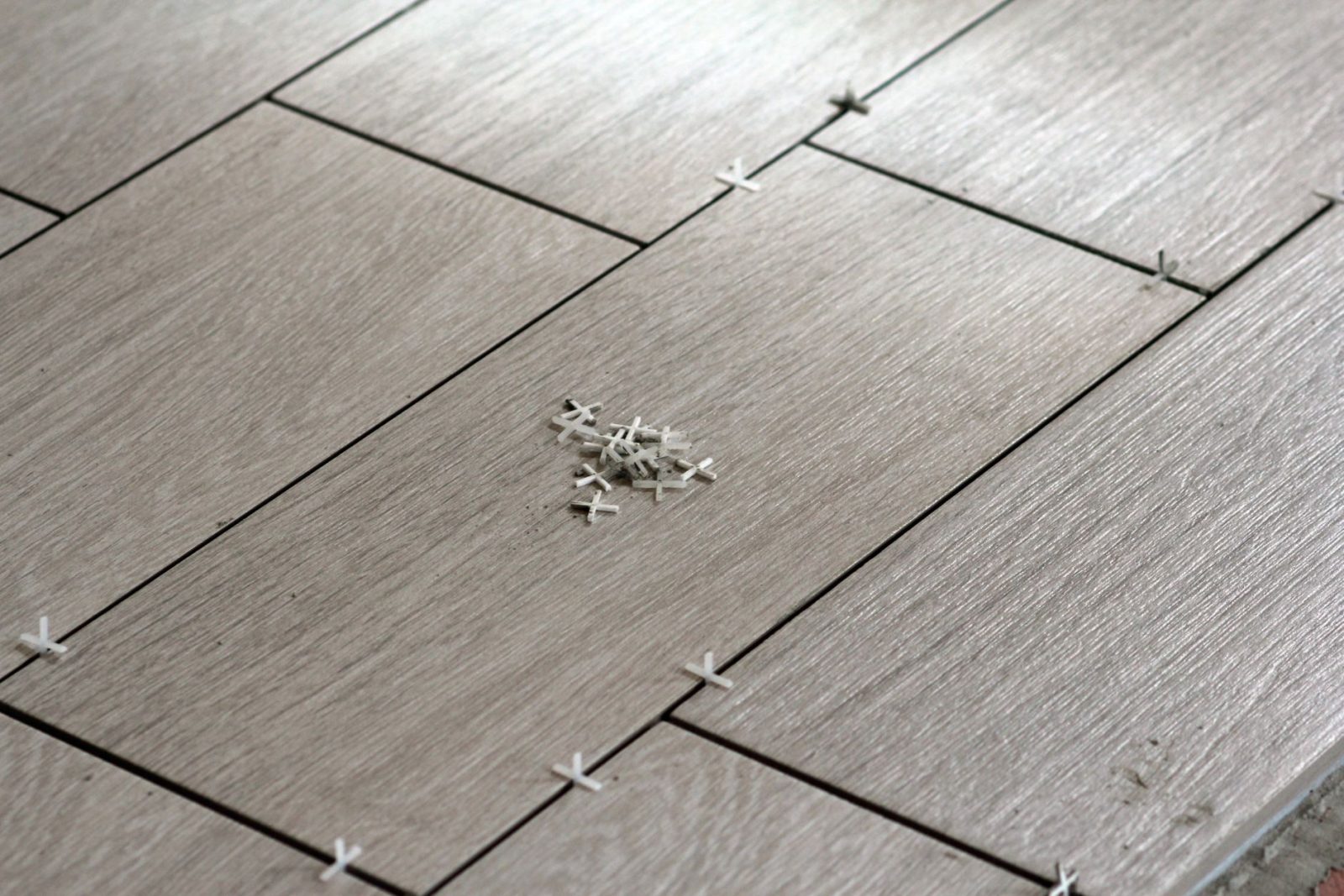
1. For some surfaces like marble, defects may be hard to spot, because the natural striations (veins) can hide actual holes or chipping. Run your fingers over suspected surfaces; they should always be smooth. (Note that small cracks can become big cracks over time)
2. Inspect the floor from a distance of 1.5 metres to two metres, under normal light (it’s best to do this in daytime). The colour of the flooring should not change (become brighter or darker). Make sure it’s not the lighting tricking your eyes though.
For hardwood this is more serious; having certain planks of wood with a different colour indicates issues such as the wood not being properly dried out. Over a long period, that specific plank can warp or crack.
3. Check for any raised surfaces or bumps between connecting pieces of the flooring; such as one tile being higher than the tile next to it. Under BCA standards, uneven height between tiles is classed as a defect if it exceeds 0.5 mm. For hardwood, it is classed as a defect if the height difference exceeds 3mm over a length of 1.2 metres.
There should be no sharp edges, where a corner of a particular tile or plank is raised above the others.
Ron adds to “Check for any hollow spaces between the tile and the cement under it. Tap it lightly with a coin or the tip of an umbrella – you can hear a hollow sound if there’s a gap.”
4. Check the skirting, which is considered part of the flooring. This is the small “panel” where the floor meets the wall. The skirting should not be chipped or discoloured. There must be no gap between the skirting and the floor, or between joints in the skirting (check the corners of the rooms).
It is an industry practice in Singapore to offer a one-year warranty. During this time, the contractor (or sub-contractor) should be able to fix the defect without cost to you.
If you need more tips on property ownership in Singapore, you can ask us on Facebook and we’ll get an expert opinion for you. You can also follow us on Stacked to get the latest insights and in-depth reviews on Singapore’s most notable condos.
Special thanks to Ron Chong, author of RonChong.net.
If you’d like to get in touch for a more in-depth consultation, you can do so here.
Have a real estate question, or not sure what your options are? Email us at stories@stackedhomes.com.
Ryan J. Ong
A seasoned content strategist with over 17 years in the real estate and financial journalism sectors, Ryan has built a reputation for transforming complex industry jargon into accessible knowledge. With a track record of writing and editing for leading financial platforms and publications, Ryan's expertise has been recognised across various media outlets. His role as a former content editor for 99.co and a co-host for CNA 938's Open House programme underscores his commitment to providing valuable insights into the property market.Read next from Property Advice

Property Advice Should We Buy An Old 99-Year Leasehold Condo To Live In: Will It’s Value Fall When The Lease Runs Out?

Property Advice We Own A $800K 1-Bedder And A $1.1M 3-Bedder: Is It Possible To Upgrade To A 4-Bedder Condo?

Property Advice I Own A 55-Year-Old HDB Flat, But May Have To Sell — Can I Realistically Buy A Freehold Condo With $700K?

Property Advice We Own A 2-Bedder Condo In Clementi: Should We Decouple To Buy A Resale 3 Bedder Or Sell?
Latest Posts

Property Market Commentary Why The Singapore Property Market Will Be Different In 2026 — And It’s Not Just About Prices

Editor's Pick 2025 Year-End Review Of The Singapore Property Market: What The Numbers Reveal

Pro This 21-Year-Old Condo Didn’t Sell Out Initially, Yet Became A Top Performer

Editor's Pick How The HDB Resale Market Performed In 2025, And What It Means For 2026 Prices

Editor's Pick 4 Key Trends Reshaping Singapore’s New Launch Condo Market In 2026

Editor's Pick What I Only Learned After My First Year Of Homeownership In Singapore

Singapore Property News Why More Land Doesn’t Automatically Fix Housing In Singapore

On The Market Here Are The Cheapest 4-Room HDB Flats in Central Singapore You Can Still Buy From $490K

Pro How A Once “Ulu” Condo Launched In 1997 Became A Top Performer

Editor's Pick I Reviewed A New Launch 4-Bedroom Penthouse At Beauty World

Property Market Commentary When Renting In Singapore Is The Smarter Move — And Buying Can Wait

Editor's Pick Why Singaporean Families Are Looking At This Landed Enclave From Around $4M

Singapore Property News Lentor’s First Condo Is Complete — The Early Profits May Surprise You

Editor's Pick A Wave Of New HDB Resale Supply Is Coming In 2026: Here’s Where To Find Them

On The Market These Are Some Of The Cheapest 5-Room HDB Flats Left In Central Singapore



